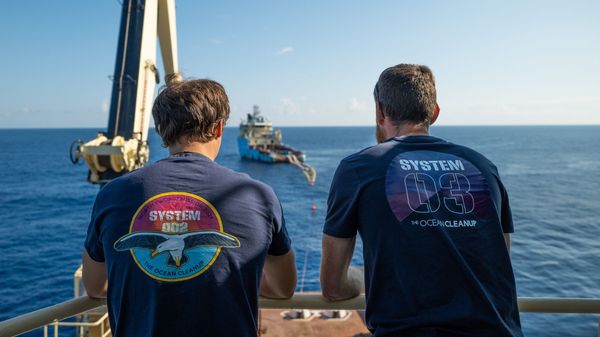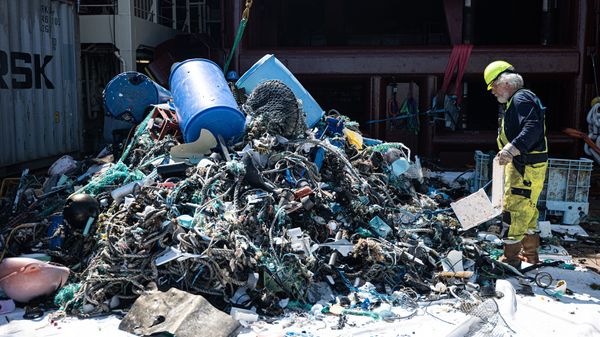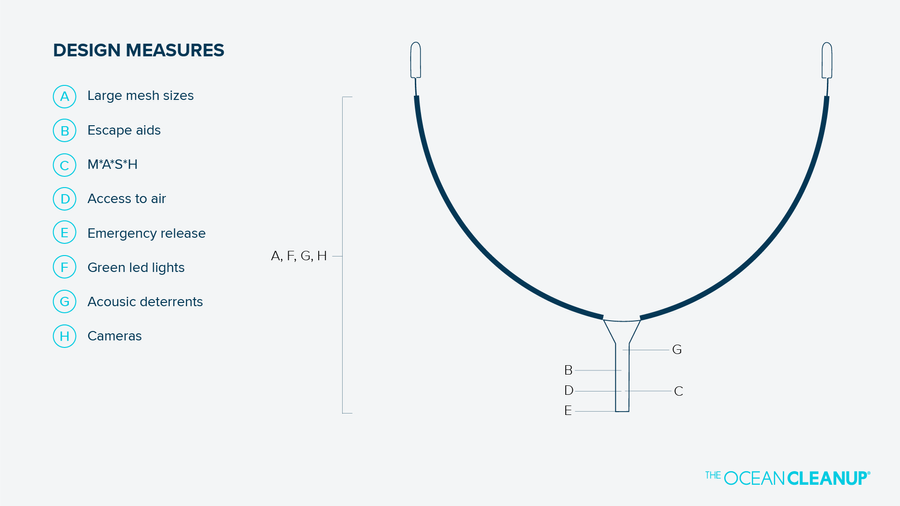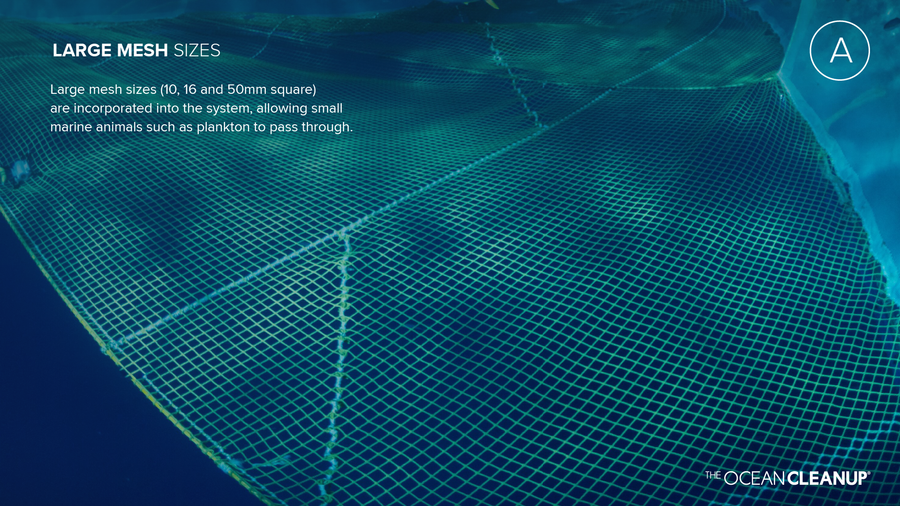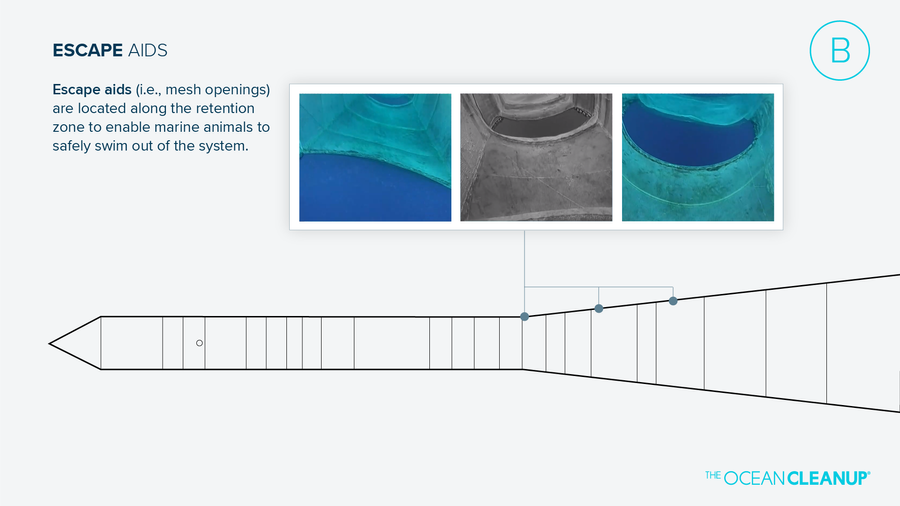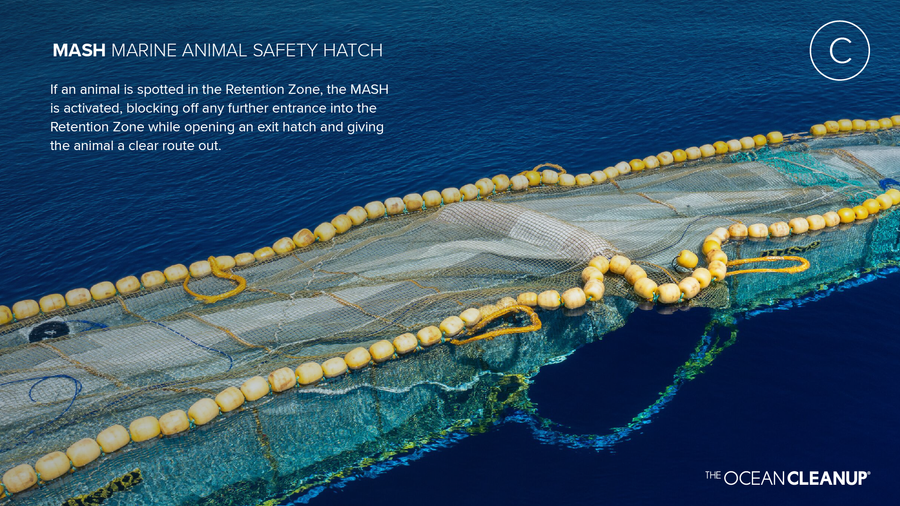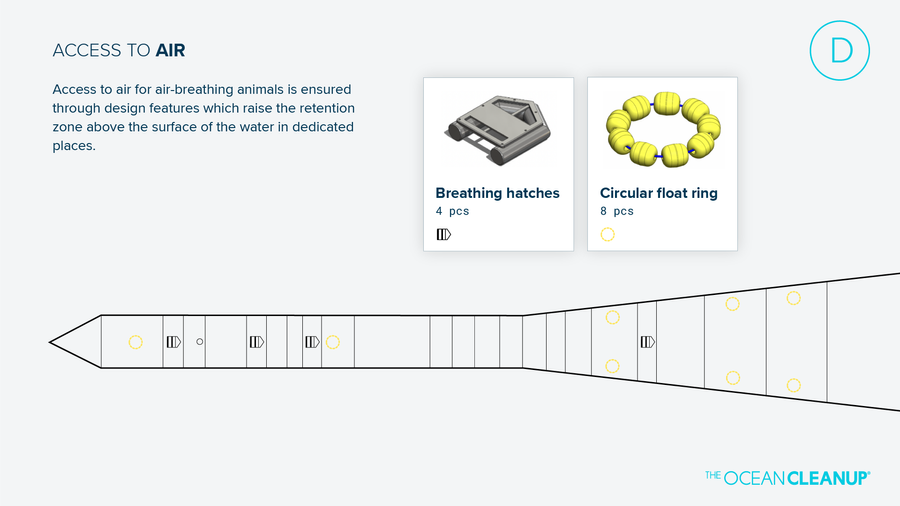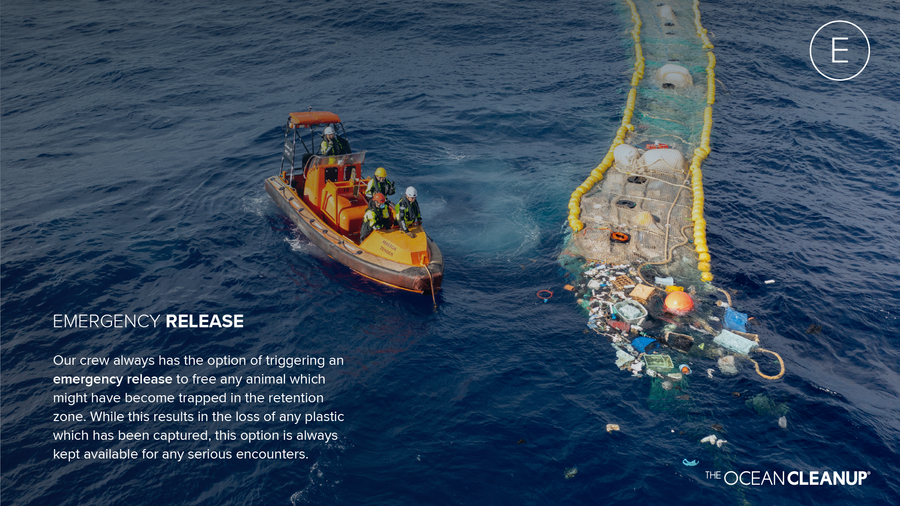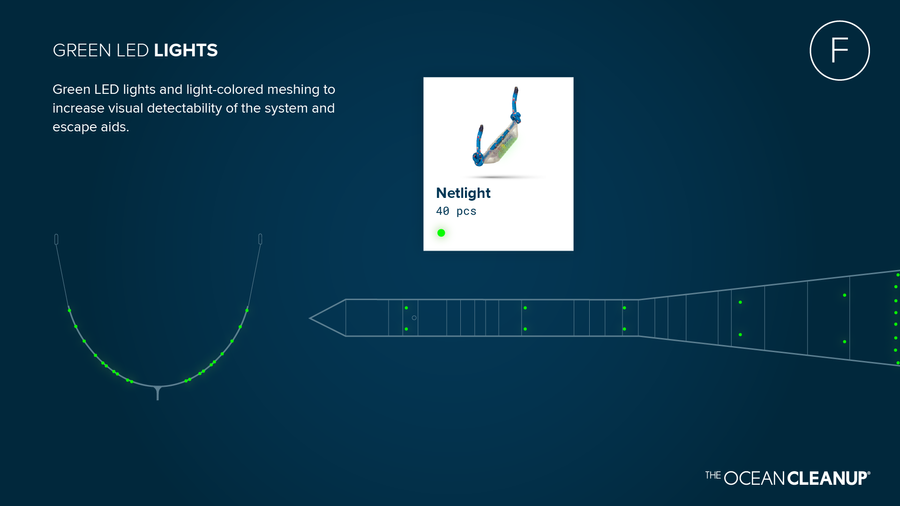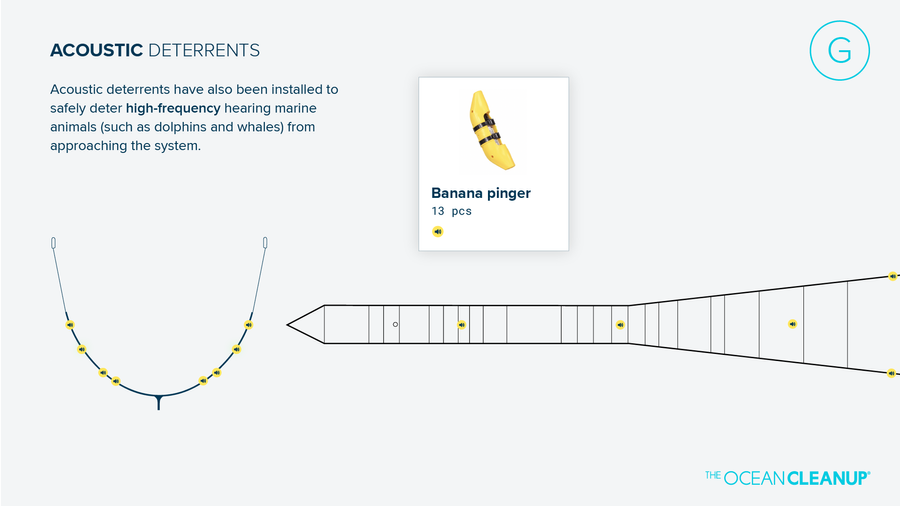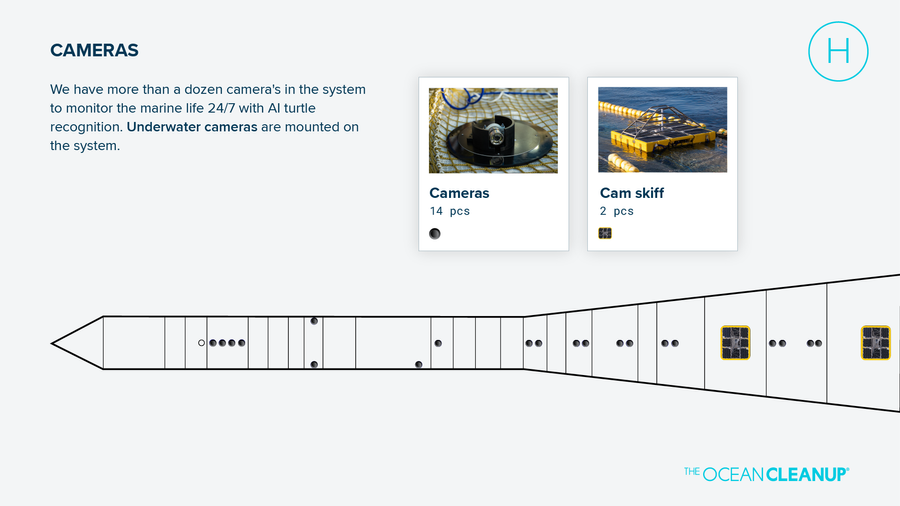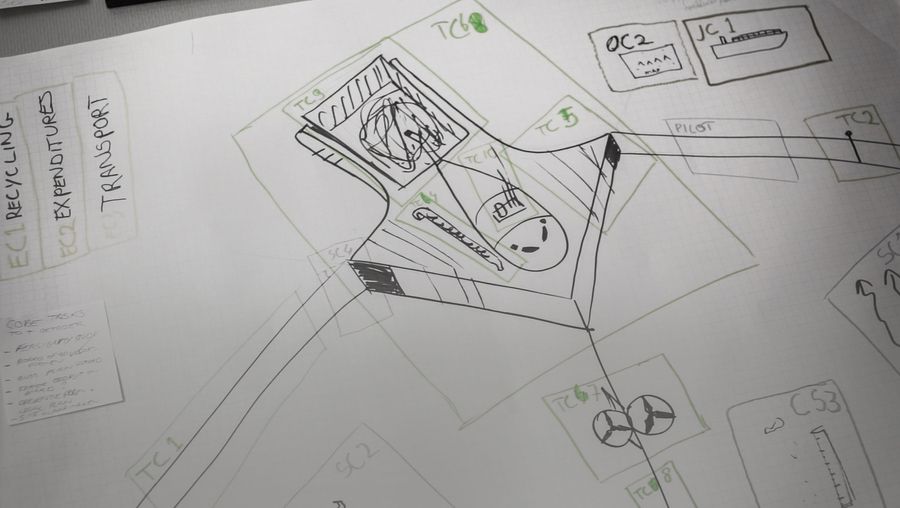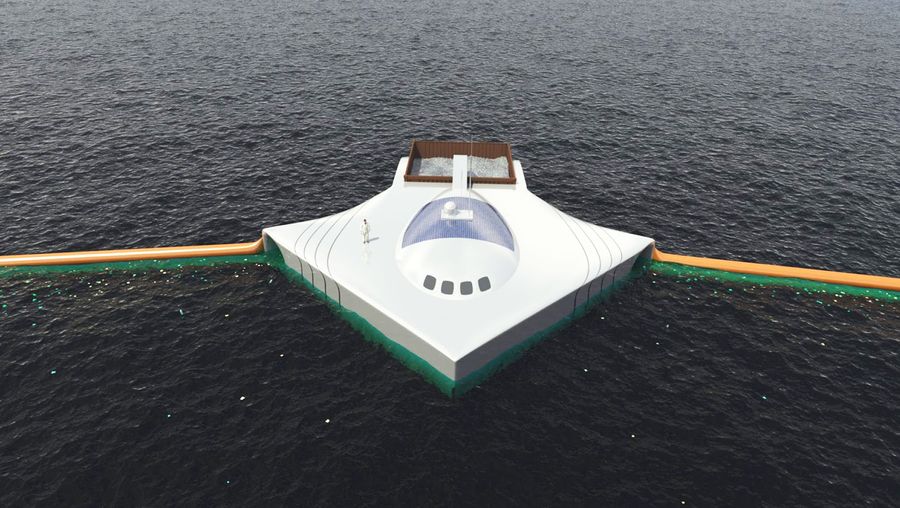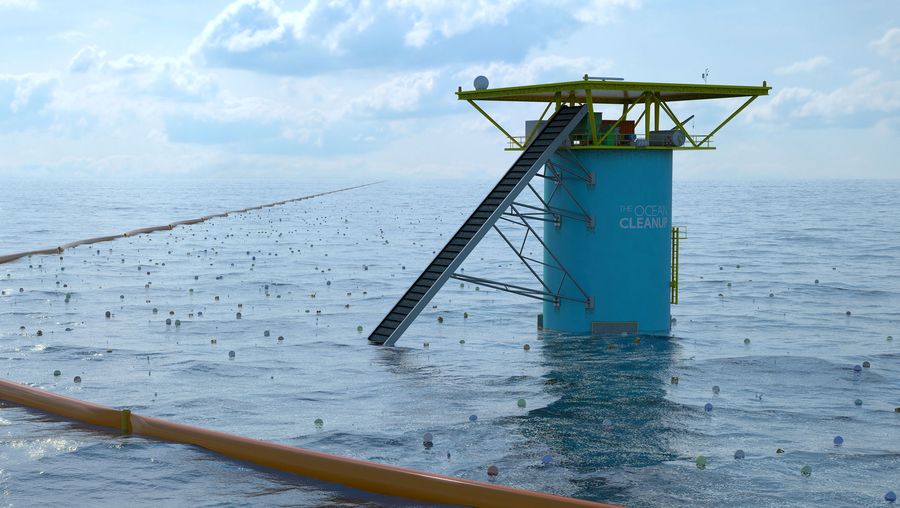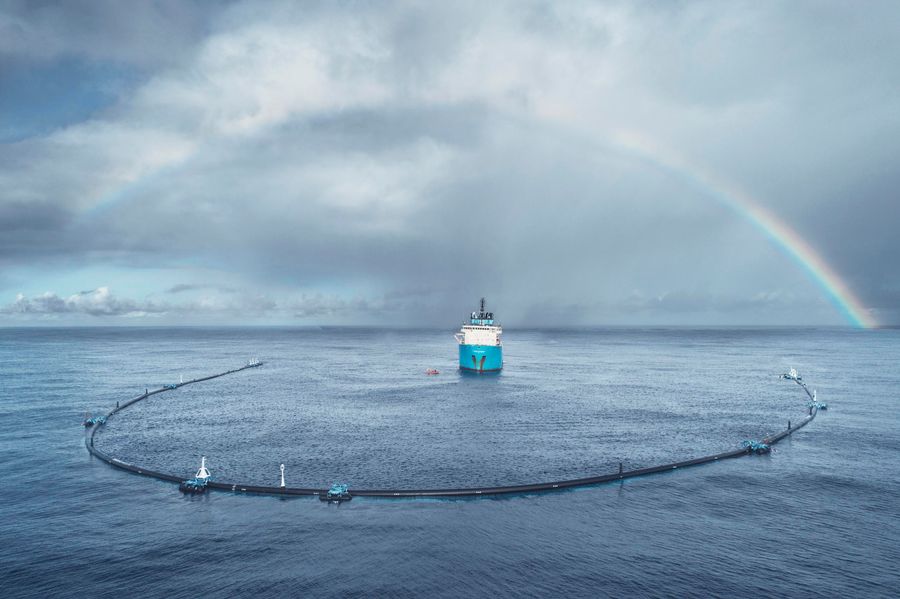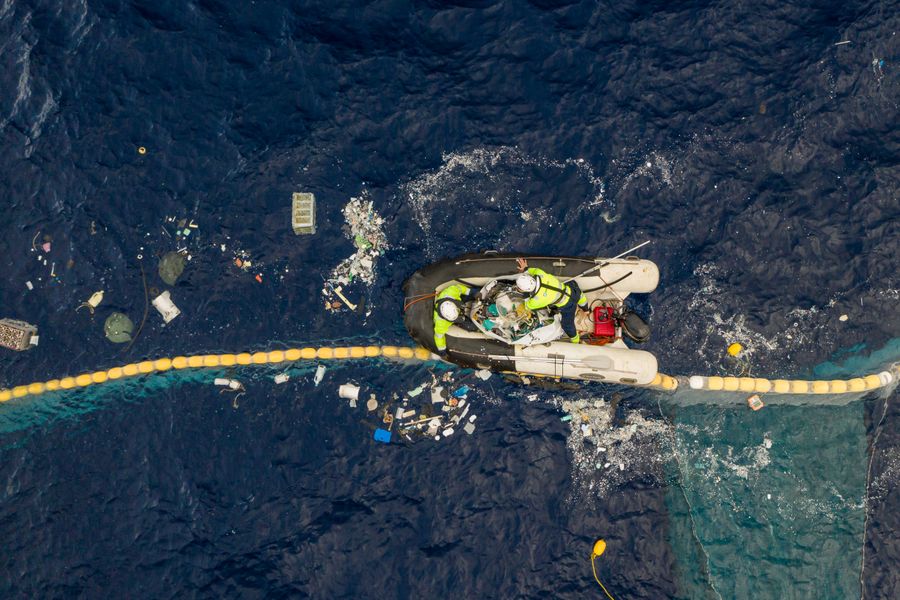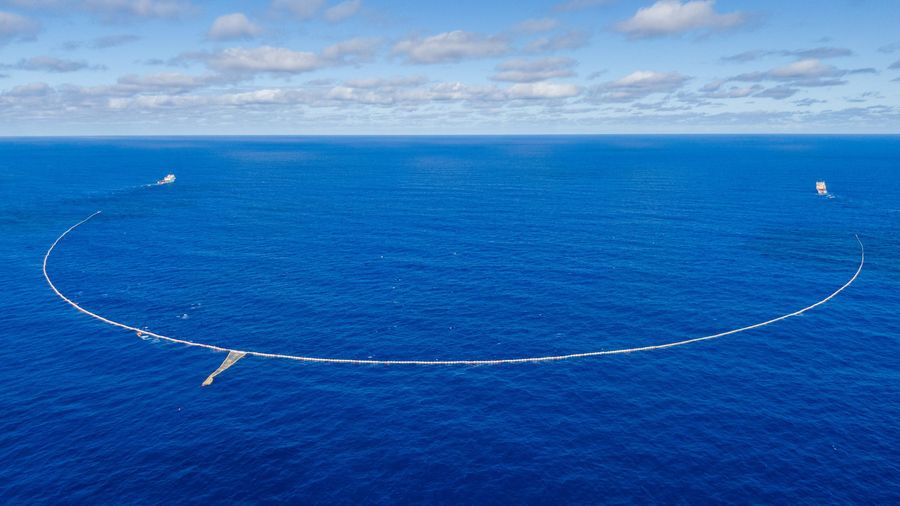
Cleaning up the garbage patches
Over 5 trillion pieces of plastic currently litter the ocean
Ocean plastic accumulates in five ocean garbage patches, the largest one being the Great Pacific Garbage Patch, located between Hawaii and California. To solve it, we not only need to stop more plastic from flowing into the ocean, but also clean up what is already out there. Floating plastics trapped in the patches will keep circulating until they break down into smaller and smaller pieces, becoming harder to clean up and increasingly easier to mistake for food by sealife. If left to circulate, the plastic will impact our ecosystems, health, and economies for decades or even centuries.
Cleaning the ocean garbage patches
The fundamental challenge of cleaning up the ocean garbage patches is that the plastic pollution is highly diluted, spanning millions of square kilometers. Our cleanup solution is designed to first concentrate the plastic, allowing us to effectively collect and remove vast quantities. This is how it works:
How it works
Target
The circulating currents in the garbage patch move the plastic around, creating natural ever-shifting hotspots of higher concentration. With the help of computational modeling, we predict where these hotspots are and place the cleanup systems in these areas.
Expected impact
Our floating systems are designed to capture plastics ranging from small pieces, just millimeters in size, up to large debris, including massive, discarded fishing nets (ghost nets), which can be tens of meters wide.
Modeling predicts we need around 10 full-size systems to clean up the Great Pacific Garbage Patch.
After fleets of systems are deployed into every ocean gyre, combined with source reduction, The Ocean Cleanup projects to be able to remove 90% of floating ocean plastic by 2040.
-
Smart steering
Active steering and computer modeling enable us to target plastic hotspots -areas of higher concentration- to improve efficiency. Our models will be steadily improved using field data collected during our offshore missions, allowing for continually smarter operations and more focused cleanup.
-
Carbon offsetting
We aim to offset all carbon emissions related to our operations. We continuously work on technological and operational ways of minimizing emissions, while also conducting a full cost-benefit assessment to determine our net impact on the environment.
-
Scalable
By taking a careful step-by-step approach, the modular fleet of systems can be gradually scaled up while we learn from the field and improve the technology along the way. The more systems deployed, the faster the cleanup will be.

Track the progress
See where we are cleaning and how much has been removed to date.
The system at sea
MANAGING ENVIRONMENTAL IMPACT
We aim to rid the oceans of plastic in the most responsible way possible. Our mission is intended to benefit the ocean and its inhabitants, so we place protection of the marine environment and mitigation of any negative impact of our operations at the forefront of our ocean cleaning operations.
Since our operations began, we have conducted continuous research in the laboratory and the field, aiming to optimize our positive impact consistently. System 03, our current ocean cleaning technology, has deterrents, cameras, escape aids, and other features to minimize risk to marine wildlife. We also have trained independent observers on board the vessels each trip to monitor any interactions with protected species (such as turtles or whales) in the area. Monitoring data has confirmed that our operations are having only minimal effects on the environment.
In the gallery below, you can learn more about how we keep marine wildlife safe during our cleaning operations. You can also read more about our environmental protection measures in greater detail in this update.
Furthermore, System 03 provides a unique platform for scientific research investigating the sources, fate, and impacts of plastic pollution in the open ocean. The data also helps improve the global understanding of the ecosystem in the GPGP.
We are also committed to offsetting all carbon emissions associated with the System 03 operations. For more about our approach to topics like these, see our Environment page.
SURVIVING STORMS
As the cleanup systems must remain in the GPGP for long periods (sometimes under extremely harsh conditions), it is crucial that our systems can withstand ocean forces. We closely monitor the loads on the system, and we adapt the speed and span during rough seas. We track the latest weather forecasts to plan our route to avoid storms and to identify areas where cleaning conditions are most optimal. In the case of a particularly severe storm, the system can be temporarily withdrawn from operation.

Join the cleanup
-

Help
CleanYour donation empowers us to continue our innovative cleanup efforts. Together, we can create a cleaner future for our oceans.
-
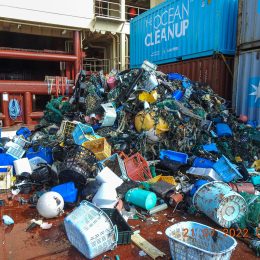
Partner
with usIf your company, organization, or foundation would like to be part of the scale-up, please reach out.
-
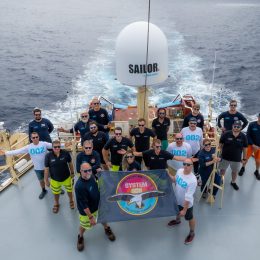
Join the
crewWe are always looking for new bright people to join the mission. Be part of a driven group of experts, who see the “impossible” as temporary.
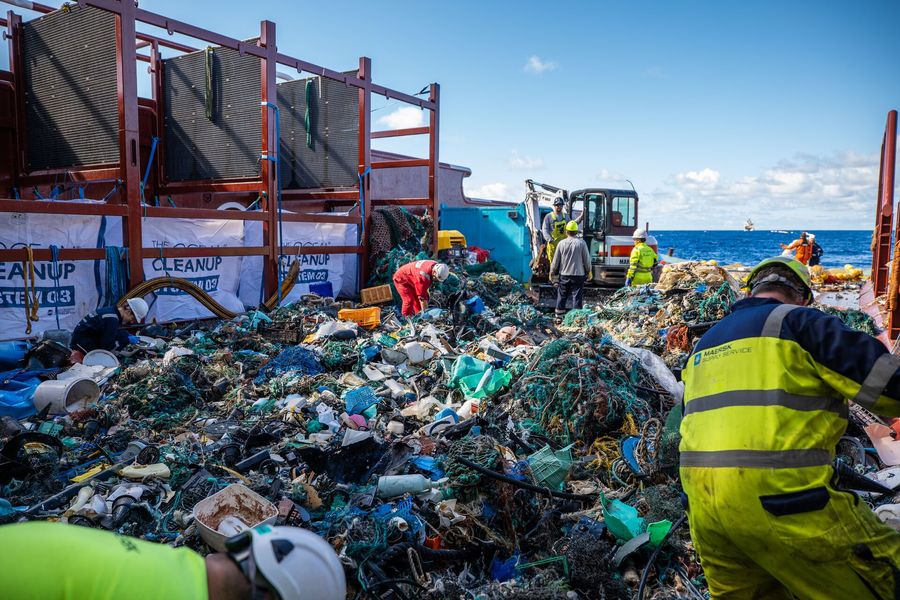


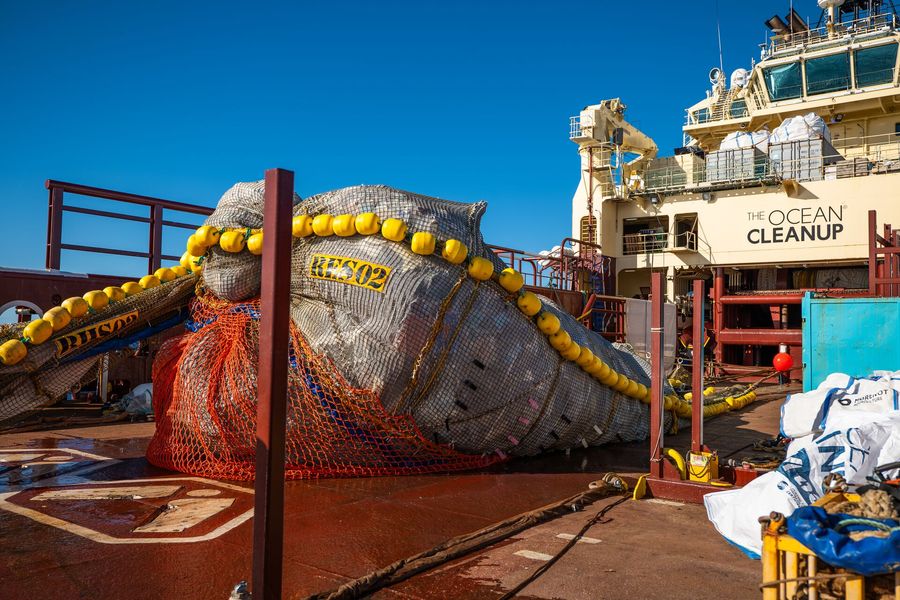
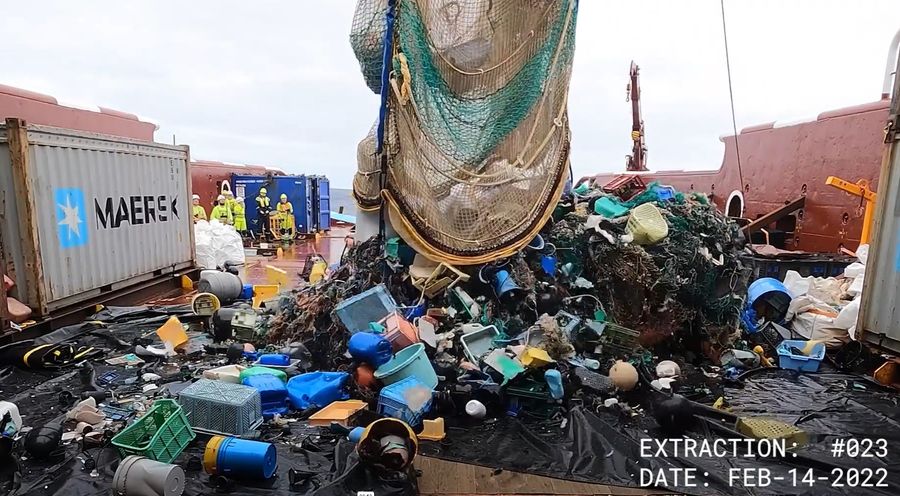
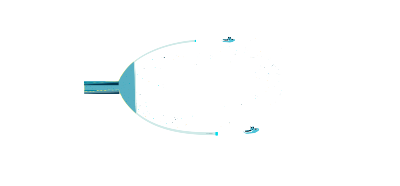
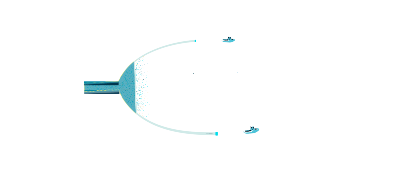
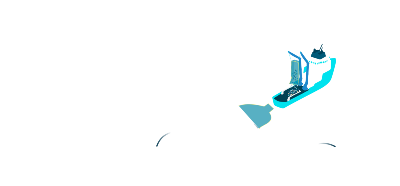
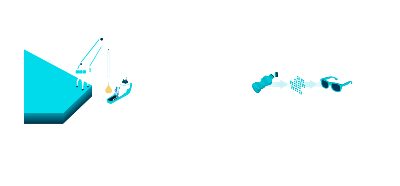
![Great Pacific Garbage Patch in 2030 with and without cleanup. [scale units : kg/km2]](https://assets.theoceancleanup.com/scaled/640x/app/uploads/2019/05/map_gpgp_with_cleanup_with_hscale_web.png)

